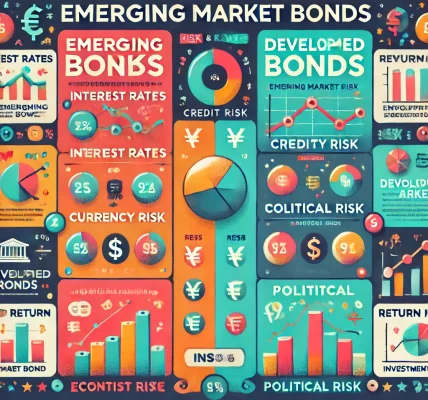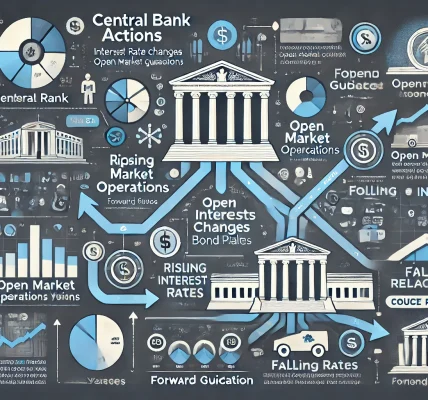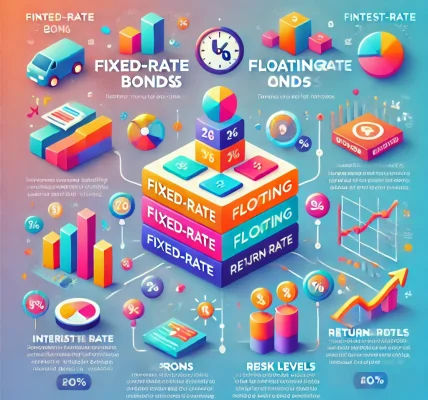Understanding the relationship between bond yield and bond price is crucial for any investor looking to navigate the fixed-income market. While both terms are essential components of bond investing, they operate in an inverse relationship and can significantly impact the returns on your investment. In this comprehensive guide, we will break down the key differences between bond yield and bond price, how they are calculated, and what every investor should know to make informed decisions.
What is Bond Price?
Bond price refers to the amount of money an investor pays to purchase a bond. While bonds are typically issued at face value (also known as “par value”), their prices fluctuate in the secondary market due to factors like interest rates, credit risk, and market demand.
Key Factors Affecting Bond Prices:
- Interest Rates: Bond prices and interest rates have an inverse relationship. When interest rates rise, existing bond prices fall; when interest rates decline, bond prices increase.
- Credit Rating: Higher-rated bonds (e.g., AAA) typically command higher prices due to lower default risk.
- Market Demand: Strong demand for bonds drives up prices, while weak demand drives them down.
- Time to Maturity: Bonds closer to maturity are less sensitive to interest rate changes and trade closer to face value.
Bond Price Calculation Formula:
The price of a bond is calculated by discounting the future cash flows (coupon payments and principal) to the present value.
Bond Price = ∑ (Coupon Payment / (1 + r)^t) + (Face Value / (1 + r)^n)
Where:
- Coupon Payment: Regular interest payments
- r: Discount rate (market interest rate)
- t: Time period
- n: Number of periods until maturity
What is Bond Yield?
Bond yield refers to the return an investor earns on a bond investment. It reflects the income generated from the bond’s interest payments relative to its price. There are several ways to measure bond yield, each providing insight into the bond’s potential returns.
Types of Bond Yields:
- Coupon Yield (Nominal Yield): This is the fixed annual interest payment as a percentage of the bond’s face value.Formula: Coupon Yield = (Annual Coupon Payment / Face Value) × 100
- Current Yield: This measures the annual income as a percentage of the bond’s current market price.Formula: Current Yield = (Annual Coupon Payment / Market Price) × 100
- Yield to Maturity (YTM): The total expected return if the bond is held until it matures, accounting for all future cash flows.
- Yield to Call (YTC): Similar to YTM but applies if the bond can be called (redeemed) before maturity.
The Inverse Relationship Between Bond Yield and Bond Price
One of the most critical principles of bond investing is the inverse relationship between bond price and bond yield:
- When bond prices rise, bond yields fall.
- When bond prices fall, bond yields rise.
Why Does This Inverse Relationship Occur?
When market interest rates increase, newly issued bonds offer higher yields. Existing bonds with lower yields become less attractive, leading their prices to fall. Conversely, when interest rates decline, existing bonds offering higher yields become more valuable, causing their prices to rise.
Example of Bond Yield vs. Bond Price Relationship:
- If you purchase a bond with a face value of $1,000 paying a 5% annual coupon, your annual income is $50.
- If market rates rise to 6%, new bonds will offer $60 annual income. To remain competitive, the price of your bond will decrease.
- If market rates fall to 4%, your bond’s $50 annual income becomes more attractive, and the bond price will increase.
Practical Implications for Investors
Understanding the bond price-yield relationship is vital for crafting a successful bond investment strategy. Here are a few ways this knowledge can guide your decisions:
- Interest Rate Forecasting: If you anticipate rising interest rates, consider short-term bonds to mitigate price volatility. If you expect falling rates, long-term bonds may offer higher returns.
- Portfolio Diversification: Balancing your portfolio with a mix of high-yield and low-yield bonds can help manage risk and reward.
- Income vs. Capital Appreciation: Investors seeking stable income may prioritize current yield, while those focused on capital gains may monitor price fluctuations.
Risks Associated with Bond Price and Yield
While bonds are generally viewed as safer investments than stocks, they come with their own set of risks:
- Interest Rate Risk: Rising interest rates can decrease the market value of bonds.
- Credit Risk: The issuer may default, resulting in a loss of interest payments and principal.
- Inflation Risk: Inflation reduces the purchasing power of fixed coupon payments.
- Liquidity Risk: Some bonds may be difficult to sell quickly without significant price concessions.
How to Analyze Bond Investments Effectively
To make informed bond investment decisions, focus on these critical metrics:
- Yield to Maturity (YTM): Provides a comprehensive measure of total return.
- Duration: Measures a bond’s sensitivity to interest rate changes.
- Credit Rating: Reflects the issuer’s financial health and ability to meet obligations.
Conclusion
The relationship between bond yield and bond price is foundational to understanding bond markets. By grasping the inverse relationship and the factors that influence both metrics, investors can better navigate changing market conditions and align their bond investments with their financial goals. Whether you are a conservative investor seeking steady income or a more aggressive investor looking to capitalize on market inefficiencies, knowing the nuances of bond yields and prices empowers you to make informed, strategic decisions.
Always conduct thorough research and consult with a financial advisor to tailor your bond investments to your specific needs and risk tolerance. With the right approach, bonds can provide stability, income, and diversification within a well-rounded investment portfolio.




